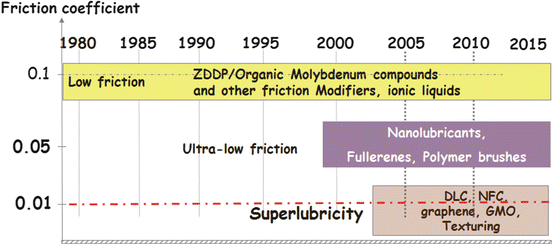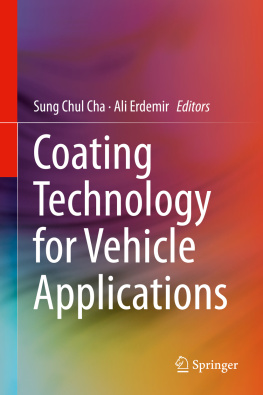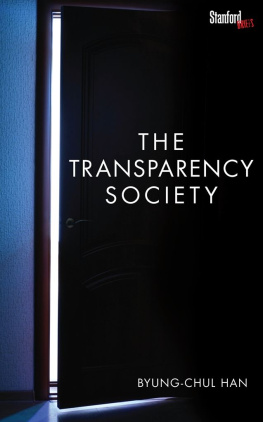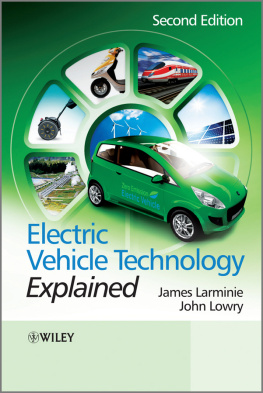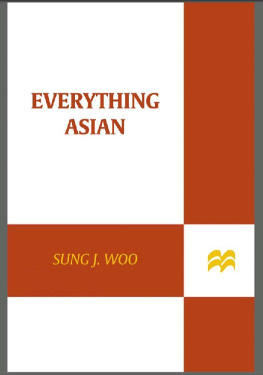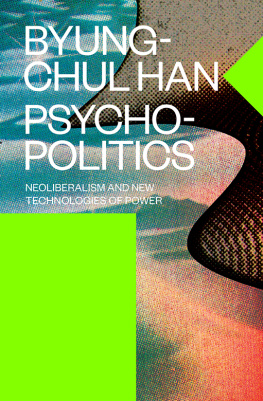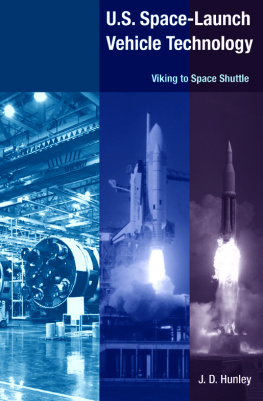1. Energy Consumption Due to Friction in Motored Vehicles and Low-Friction Coatings to Reduce It
Abstract
During the past two decades, global awareness and societal needs for more fuel-efficient and environmentally friendly transportation systems have increased considerably because of the diminishing oil reserves, skyrocketing fuel prices, and much tougher governmental regulations to combat greenhouse gas emissions. During the same period, automotive and lubrication engineers have intensified their efforts to reduce parasitic energy losses due to friction, rolling resistance, aerodynamics, and cooling systems and to thereby boost the efficiency of next-generation transportation vehicles. In comprehensive studies involving light, medium, and heavy-duty vehicles (Holmberg et al., Tribol Int 47:221234, 2012; Holmberg et al., Tribol Int 78:94114, 2014), it was determined that nearly one-third of the fuel energy is consumed to overcome friction generated by engines, transmissions, tires, and brakes. Among these, energy losses due to friction in engines and transmissions were reported to be among the highest. The same studies have also advocated that with the adaptation of advanced friction control technologies, energy losses due to friction could be reduced markedly, and such improvements in energy efficiency can, in turn, translate into significant reductions in greenhouse gas emissions. The main purpose of this chapter is to provide an overview of the impact of friction on energy consumption in vehicles on a global scale and of the recently developed and emerging friction control technologies that can further improve the fuel efficiency and eco-friendliness of future transportation vehicles.
1.1 Introduction
Friction has always been and still is a fascinating physical phenomenon. Throughout history, it has captured the curiosity of humankind because of its many effects on our way of life. In particular, humankind has always searched for new means to reduce the adverse impacts of friction for smooth and safe mobility. Prime examples are the transportation of huge colossus and stones on lubricated pathways by many slaves to their designated locations along the river Nile in ancient Egypt and the use of animal fats by early Egyptians and Mesopotamians to lubricate the wheel hubs of chariots []. The lubrication of wheels and other moving parts in transportation vehicles has not essentially changed since then, but the type of lubricants used nowadays has gotten far more sophisticated and, hence, more effective. Overall, in this modern era of high mobility and global industrial activity, lubricants have become an integral part of our daily life, and without them, high friction and wear would prevail and waste energy, reduce machine life, and cause harmful emissions.
Since the beginning of the industrial revolution, many scientists and engineers have been exploring the root causes of friction and wear and means by which they can be controlled to reduce their adverse impacts on energy, the environment, and component durability. As a result of these steadfast efforts, myriad scientific insights have been gained on the mechanisms behind friction and wear, and novel solid and liquid lubricants have been developed to alleviate their deleterious effects on all kinds of moving mechanical systems. Figure is an illustration of how friction has been reduced over the past few decades alone by the development and implementation of various materials and lubrication technologies. Certainly, reduced friction translates directly into higher efficiency in all mechanical systems, while less wear ensures reliability and longer life as well as lower maintenance costs.
Fig. 1.1
Progress in friction control technologies over the years (adopted and updated from J.-M. Martin)
To reduce the adverse energy and environmental impacts of fuel consumption, increasingly tougher fuel economy and emission standards have been instated by many industrialized and developing nations in recent years. For example, the US government has steadily increased the Corporate Average Fuel Economy (CAFE) standard over the years, and for new passenger cars in 2025, the target is 54.5 miles/gallon. In addition, the Environmental Protection Agency (EPA) has reduced its fleet CO2 emission target to about 160 g per mile by 2025. If we consider the fact that in the USA alone, the transportation sector consumes about 14 million barrels of crude oil per day and is also responsible for about 32 % of the CO2 emissions; the urgency of improving efficiency and reducing emissions in vehicles becomes very clear.
Increasingly tougher efficiency and emission standards mentioned above are driving transportation and related sectors (like engine materials, lubricants, and additives) to develop and implement newer and better materials and lubrication technologies that can help meet the efficiency and emission targets, with an ultimate goal of achieving a truly sustainable transportation future. These higher performance materials and lubricants are also essential for achieving higher power density by engine downsizing and for meeting the more stringent operating conditions of advanced turbochargers, new valve train designs, and direct injection technology. Accordingly, much increased activities have been devoted to both the materials and lubrication areas to further reduce friction- and wear-related energy losses in engines and other moving mechanical systems.
On the materials side, several tribological coatings, like diamond-like carbon (DLC), have been developed and used in engines to reduce friction []. Some of the low-friction materials and lubricants mentioned are also challenging to apply or incorporate into conventional engine components or other mechanical systems. What is really desired in most practical applications is that the new and more advanced lubricants have little or no restrictions on their uses, are compatible with existing lubrication technologies, are environmentally benign, are long lasting, and are affordable and easy to implement.
As is clear from the foregoing, more work is needed to reduce the intensity and adverse effects of friction on efficiency, durability, and environmental compatibility of all moving mechanical systems, including motored vehicles. Moreover, if we consider the lifecycle analyses for materials and services used in the making of a vehicle as well as the well-to-wheel type energy losses incurred during the production of fuels and lubricants, the actual amounts of energy spent would undoubtedly be much higher. Besides, it is important to remember that frequent remanufacturing and/or replacement of worn parts due to friction- and wear-related failures also consume large amounts of energy. Along the same lines, one has to consider the energy spent to recycle a used up or failed vehicle at the end of its lifecycle.
